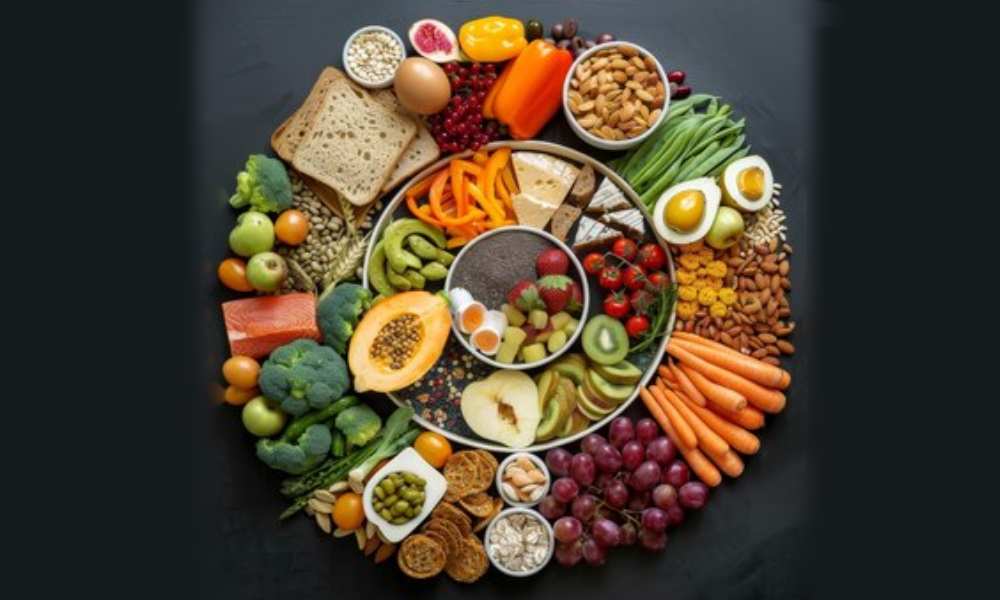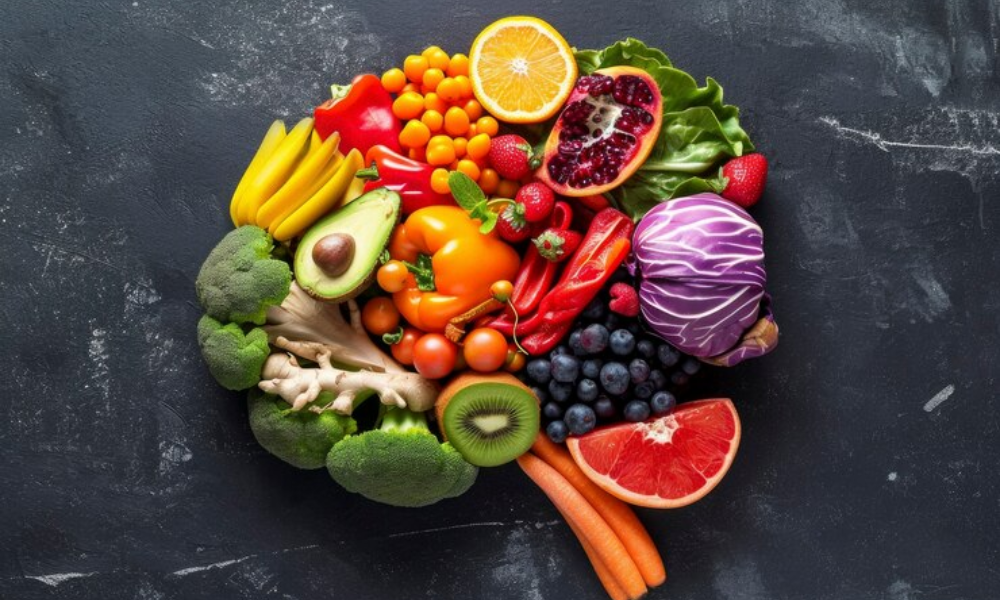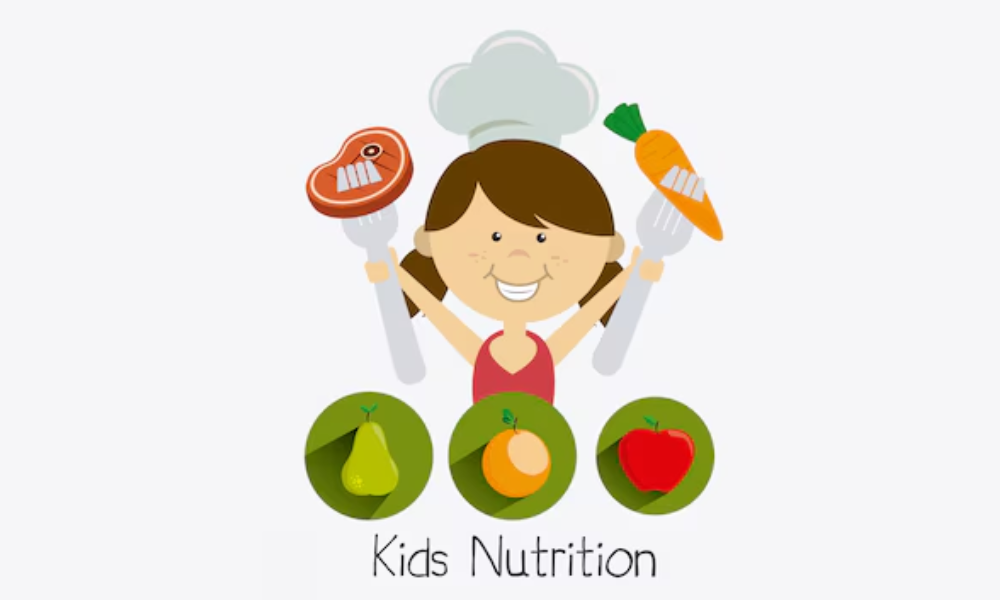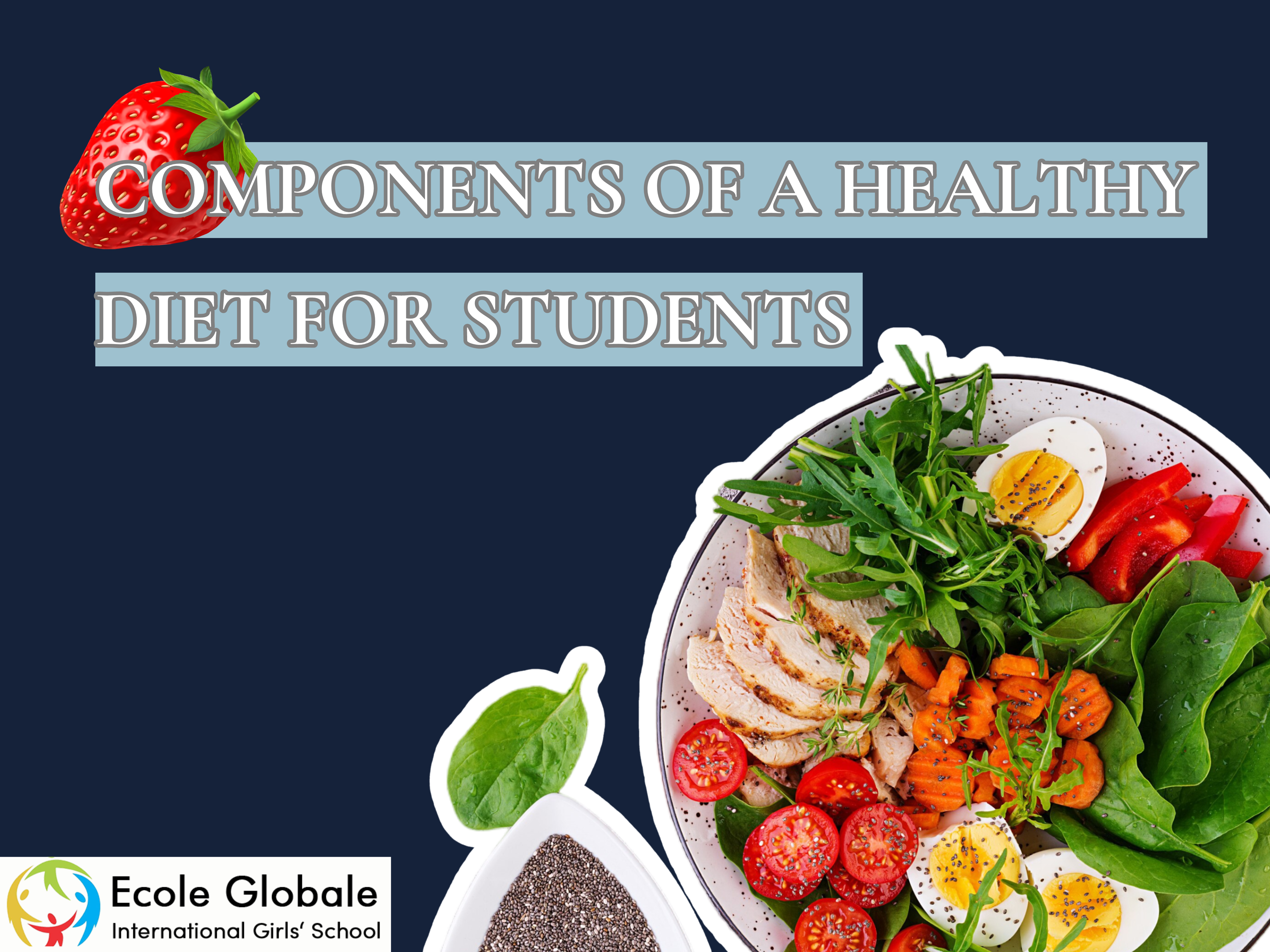A balanced diet is crucial for students as it supports their overall well-being, academic performance, and energy levels needed for daily activities. With a focus on diverse food groups, including fruits, vegetables, proteins, whole grains, and healthy fats, students can achieve optimal nutrition, highlighting the importance of healthy eating habits in supporting their overall growth and development.
This article explores in-depth the various components of a healthy diet for students, detailing essential nutrients, food choices, and practical advice for maintaining a balanced diet.
1. Balanced Diet for Students

A balanced diet provides the necessary nutrients that a student’s body needs to function effectively. A well-rounded diet helps students maintain energy, improve concentration, and support physical growth. The main components of a balanced diet include:
Fruits and Vegetables:
These should make up half of a student’s plate in each meal. They are packed with essential vitamins, minerals, antioxidants, and fiber, which help in digestion, immune function, and disease prevention. Including a variety of colors (like red tomatoes, green spinach, and orange carrots) ensures a wide range of nutrients.
- Examples: Apples, bananas, spinach, broccoli, carrots, berries, and peppers.
- Benefits: Improved immunity, reduced risk of chronic diseases, and better digestion.
Whole Grains:
Whole grains are rich in complex carbohydrates, fiber, and essential nutrients like B vitamins and iron. They provide sustained energy, which is particularly beneficial for students who need to stay alert and focused during long school hours.
- Examples: Brown rice, oats, quinoa, whole wheat bread, and barley.
- Benefits: Improved digestion, steady energy levels, and enhanced cognitive function.
Proteins:
Protein is crucial for muscle repair, growth, and overall body function. It also plays a role in maintaining the immune system and producing essential hormones. Proteins can come from both animal and plant sources, making it easy to incorporate into any diet.
- Examples: Chicken, fish, eggs, beans, lentils, tofu, and nuts.
- Benefits: Supports muscle growth, repairs tissues, and keeps students feeling full longer.
Dairy:
Dairy products are rich in calcium, vitamin D, and other essential nutrients that support bone health. For students who are lactose intolerant, fortified plant-based milks like almond or soy milk can provide similar benefits.
- Examples: Milk, yogurt, cheese, and fortified plant-based alternatives.
- Benefits: Strong bones and teeth, improved muscle function, and enhanced nerve signaling.
Healthy Fats:
Healthy fats are important for brain development and hormone regulation. Unlike saturated and trans fats, healthy fats help improve heart health and cognitive function.
- Examples: Avocados, nuts, seeds, olive oil, and fatty fish like salmon.
- Benefits: Supports brain function, reduces inflammation, and helps absorb fat-soluble vitamins.
2. What Makes a Healthy Diet for Kids?

A healthy diet for kids goes beyond just eating the right foods—it’s about incorporating nutritious, diverse, and appealing meals that meet their developmental needs. Here are the key elements:
Nutrient-Dense Foods:
These foods are high in nutrients but relatively low in calories, ensuring children get maximum nutrition without overeating. Nutrient-dense foods are particularly important during growth spurts when kids’ nutritional needs are higher.
- Examples: Leafy greens, berries, lean meats, and whole grains.
- Benefits: Provides essential vitamins and minerals without excess calories.
Adequate Hydration:
Water is vital for every cell in the body, aiding in digestion, temperature regulation, and joint lubrication. Replacing sugary drinks with water helps keep kids hydrated and focused without the extra sugar.
- Examples: Water, herbal teas, and diluted fruit juices.
- Benefits: Prevents dehydration, supports digestion, and boosts energy.
Portion Control:
Teaching kids about portion sizes helps prevent overeating and obesity. Balanced portions also ensure kids get a variety of nutrients without overloading on any one food group.
- Tips: Use smaller plates, encourage slow eating, and avoid oversized servings.
- Benefits: Maintains a healthy weight and reduces the risk of diet-related issues.
Limiting Sugar and Salt:
High sugar intake can lead to energy spikes followed by crashes, while excessive salt can affect blood pressure and kidney health. Moderating these ingredients in a child’s diet supports better overall health.
- Alternatives: Use fruits to sweeten meals, and herbs and spices instead of salt.
- Benefits: Stable energy levels, reduced risk of chronic diseases, and healthier heart function.
3. Best Foods for Student Health

Choosing the right foods can greatly impact a student’s physical and mental performance. Here are some of the best foods for maintaining student health:
Berries (Blueberries, Strawberries, Raspberries):
Berries are loaded with antioxidants, vitamins, and fiber, which can boost brain function and improve memory. They are also a healthy sweet treat alternative to sugary snacks.
- Benefits: Enhance cognitive function, reduce oxidative stress, and improve heart health.
Leafy Greens (Spinach, Kale, Broccoli):
These vegetables are rich in vitamins A, C, and K, iron, and calcium, which help support immune health, bone strength, and cognitive development.
- Benefits: Supports brain function, strengthens bones, and boosts immunity.
Oats and Whole Grains:
Whole grains provide a steady release of glucose, which is essential for sustained energy and focus. They also support digestion and help maintain a healthy weight.
- Benefits: Provides long-lasting energy, supports digestion, and helps control blood sugar levels.
Nuts and Seeds (Almonds, Chia Seeds, Flaxseeds):
These are excellent sources of healthy fats, protein, and fiber, which keep students full and focused throughout the day.
- Benefits: Improves concentration, supports heart health, and reduces inflammation.
Eggs:
Eggs are a powerhouse of nutrients, including protein, choline, and vitamin D. Choline, in particular, is important for brain development and memory.
- Benefits: Supports cognitive function, muscle repair, and provides sustained energy.
Fish (Salmon, Sardines, Tuna):
Fatty fish are rich in Omega-3 fatty acids, which are essential for brain health and reducing inflammation in the body.
- Benefits: Enhances brain function, supports heart health, and improves mood.
4. Essential Nutrients for Children

For optimal growth and development, children require specific nutrients. Below are the most crucial ones and their functions:
Calcium:
Essential for the development of strong bones and teeth. Insufficient calcium during childhood can lead to osteoporosis later in life.
- Sources: Dairy products, fortified plant-based milk, and leafy greens.
- Benefits: Promotes bone growth and supports muscle function.
Iron:
Vital for producing hemoglobin, which carries oxygen to cells. Iron deficiency can lead to anemia, causing fatigue and impaired cognitive function.
- Sources: Lean meats, beans, spinach, and fortified cereals.
- Benefits: Improves energy levels, supports cognitive development, and strengthens immunity.
Vitamin D:
Helps the body absorb calcium, supporting bone health. It also plays a role in immune function and mood regulation.
- Sources: Sunlight exposure, fish, egg yolks, and fortified foods.
- Benefits: Strengthens bones, supports immune health, and improves mood.
Vitamin C:
Essential for the repair of tissues, immune function, and absorption of iron from plant-based foods.
- Sources: Citrus fruits, strawberries, bell peppers, and broccoli.
- Benefits: Enhances immunity, improves skin health, and helps heal wounds.
Vitamins B:
These vitamins are critical for energy production, brain function, and red blood cell formation.
- Sources: Whole grains, meat, eggs, dairy, and green vegetables.
- Benefits: Supports metabolism, improves mood, and enhances concentration.
Omega-3 Fatty Acids:
Known for their role in brain health, these fats help improve memory, reduce inflammation, and support overall mental well-being.
- Sources: Fatty fish, flaxseeds, chia seeds, and walnuts.
- Benefits: Enhances cognitive function, supports heart health, and reduces inflammation.
5. Healthy Food Choices for Students

Healthy eating is not just about what you eat but also about making informed choices that fit into a student’s daily routine. Here are practical tips for maintaining a healthy diet:
Plan Balanced Meals:
Each meal should include a source of protein, healthy fat, and whole grains. Planning meals in advance helps avoid last-minute unhealthy choices.
- Tip: Use the “MyPlate” method, filling half the plate with vegetables and fruits, a quarter with whole grains, and a quarter with protein.
- Benefit: Encourages a varied and balanced diet.
Healthy Snacks:
Snacks play a significant role in a student’s diet. Opt for nutrient-dense snacks that provide energy and nutrients without added sugars or unhealthy fats.
- Examples: Greek yogurt with fruit, nut butter with apple slices, and homemade trail mix.
- Benefit: Keeps energy levels stable and reduces cravings for unhealthy foods.
Limit Processed Foods:
Processed foods are often high in added sugars, unhealthy fats, and sodium. Minimizing their intake supports better long-term health.
- Tip: Choose whole food options like fresh fruits, vegetables, nuts, and seeds over packaged snacks.
- Benefit: Reduces the risk of obesity, heart disease, and other chronic conditions.
Stay Hydrated:
Adequate hydration is crucial for concentration and energy. Encourage students to carry a water bottle and drink throughout the day.
- Tip: Flavor water with natural ingredients like cucumber slices, lemon, or mint.
- Benefit: Enhances cognitive performance and prevents fatigue.
Conclusion
Maintaining a healthy diet is essential for students, providing them with the necessary nutrients to excel academically, physically, and emotionally. By understanding the components of a balanced diet, making informed food choices, and establishing healthy eating habits, students can lay the groundwork for a lifetime of well-being. Encouraging these habits in childhood not only benefits students in their school years but also sets the stage for healthier, more productive lives as adults.
Parents, educators, and caregivers can support students by making healthy foods accessible, leading by example, and educating them on the importance of nutrition. Together, these efforts can help students thrive both inside and outside the classroom.









